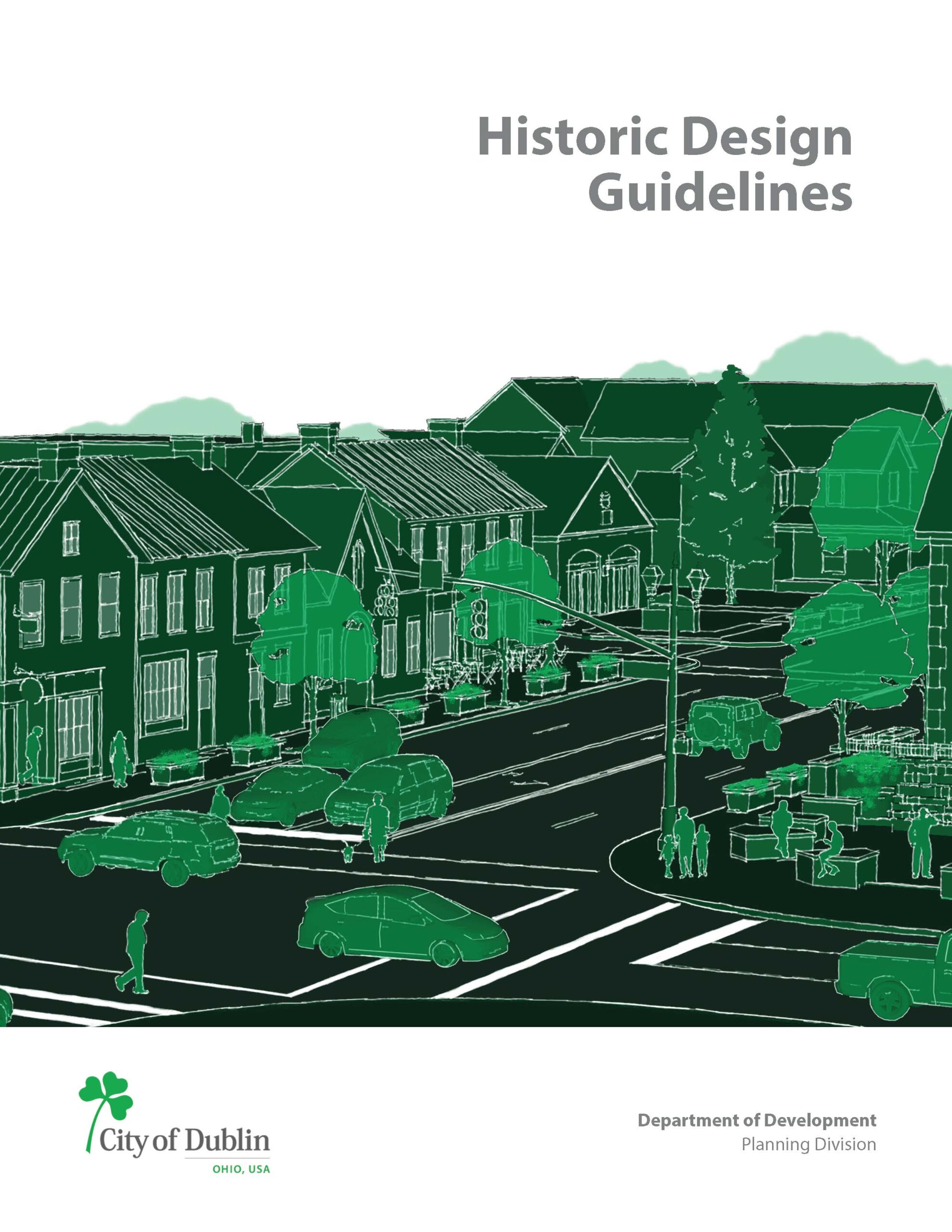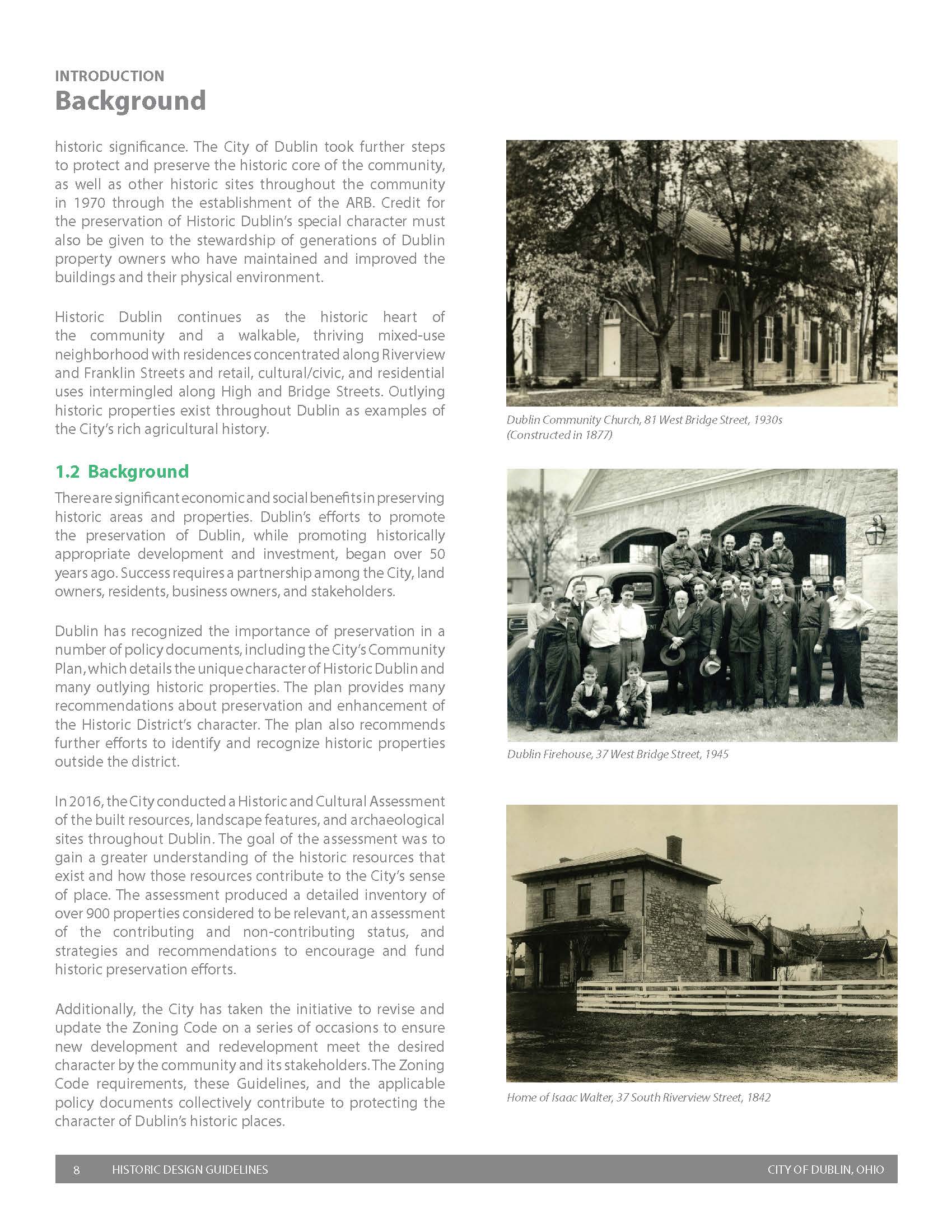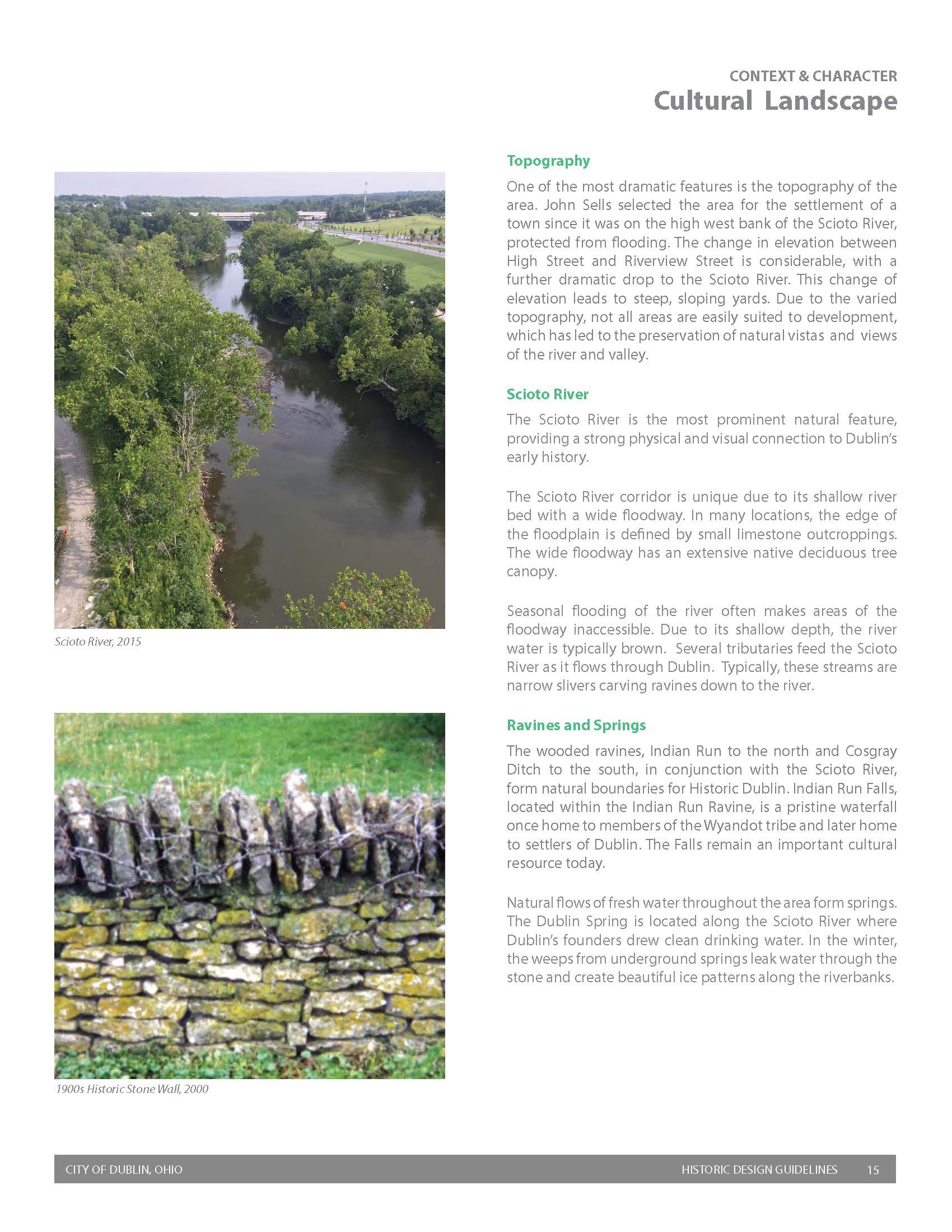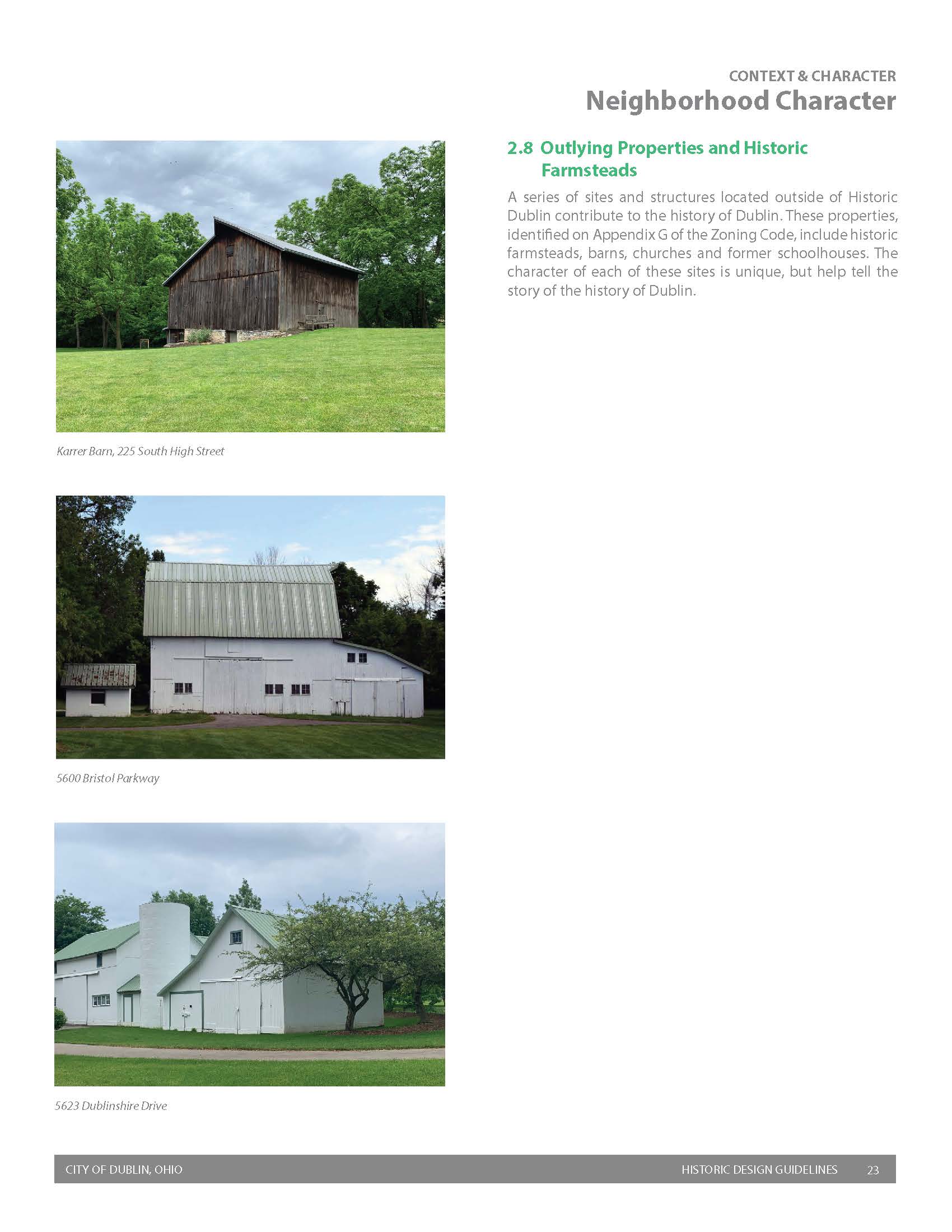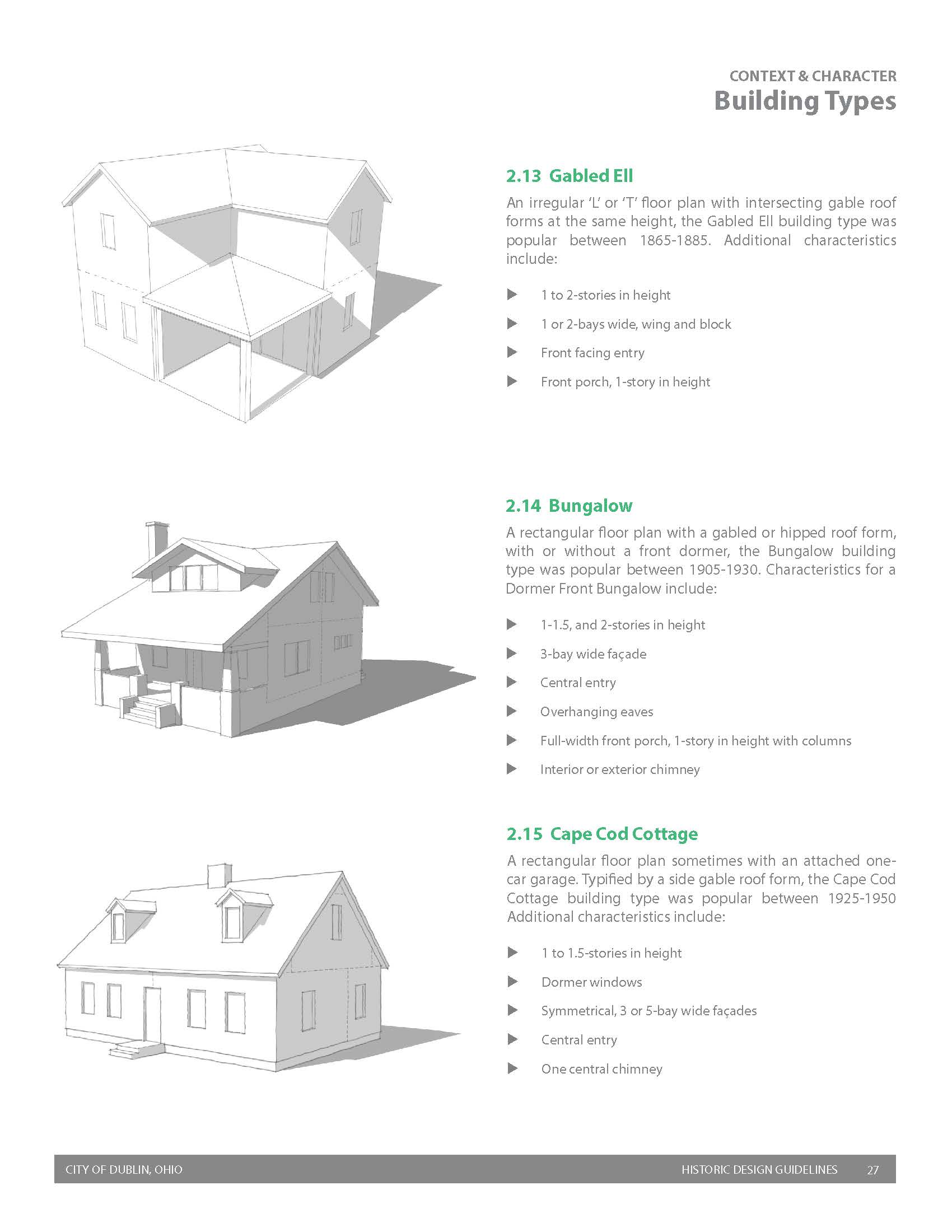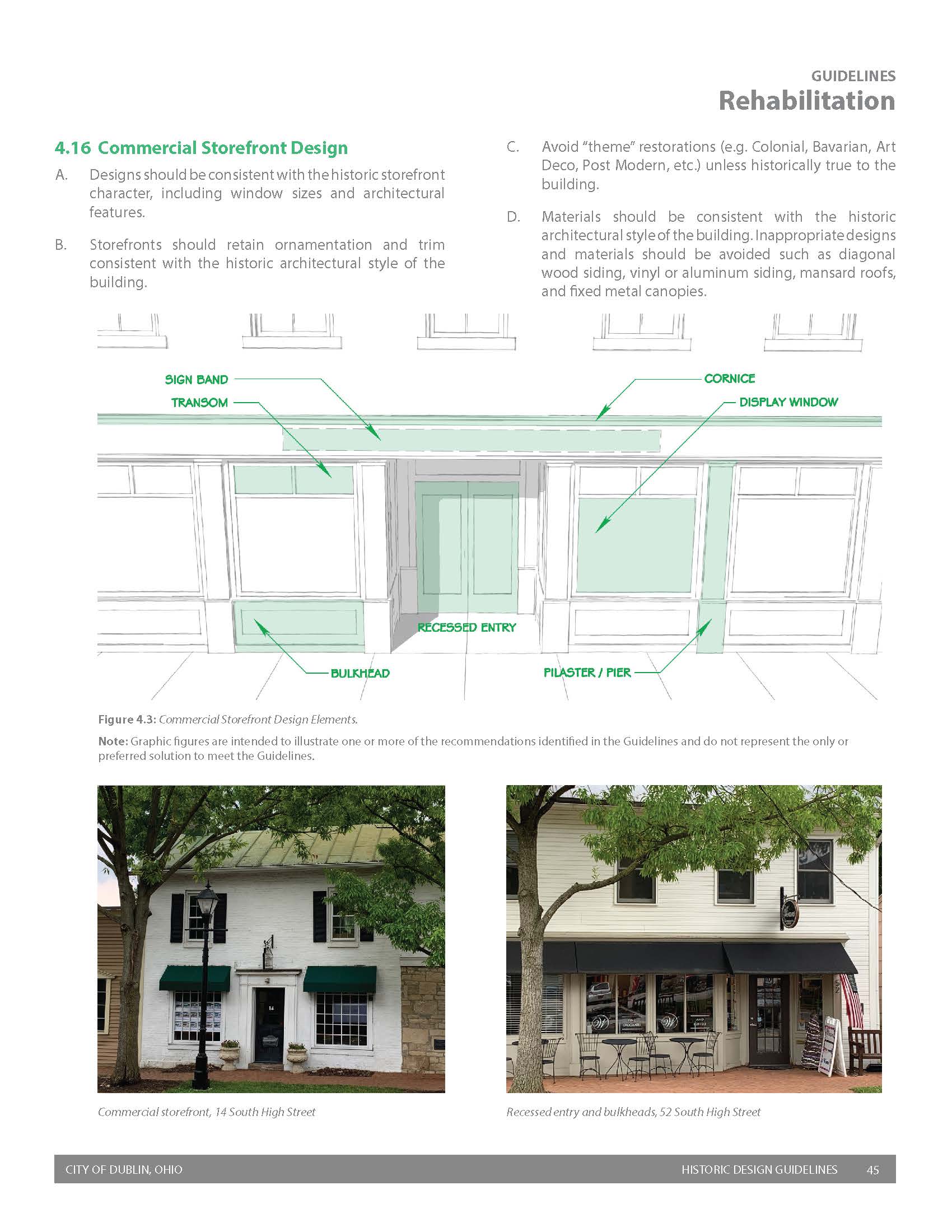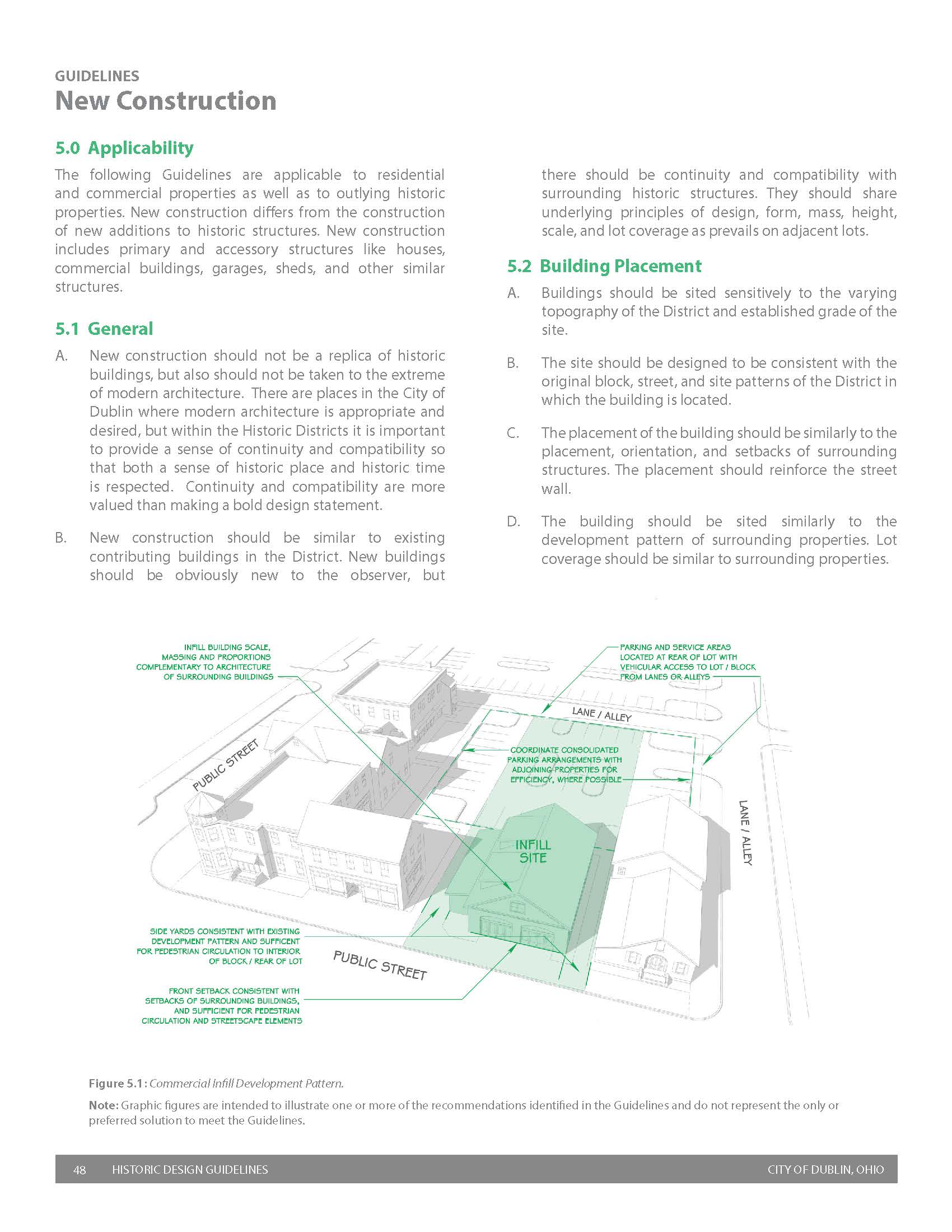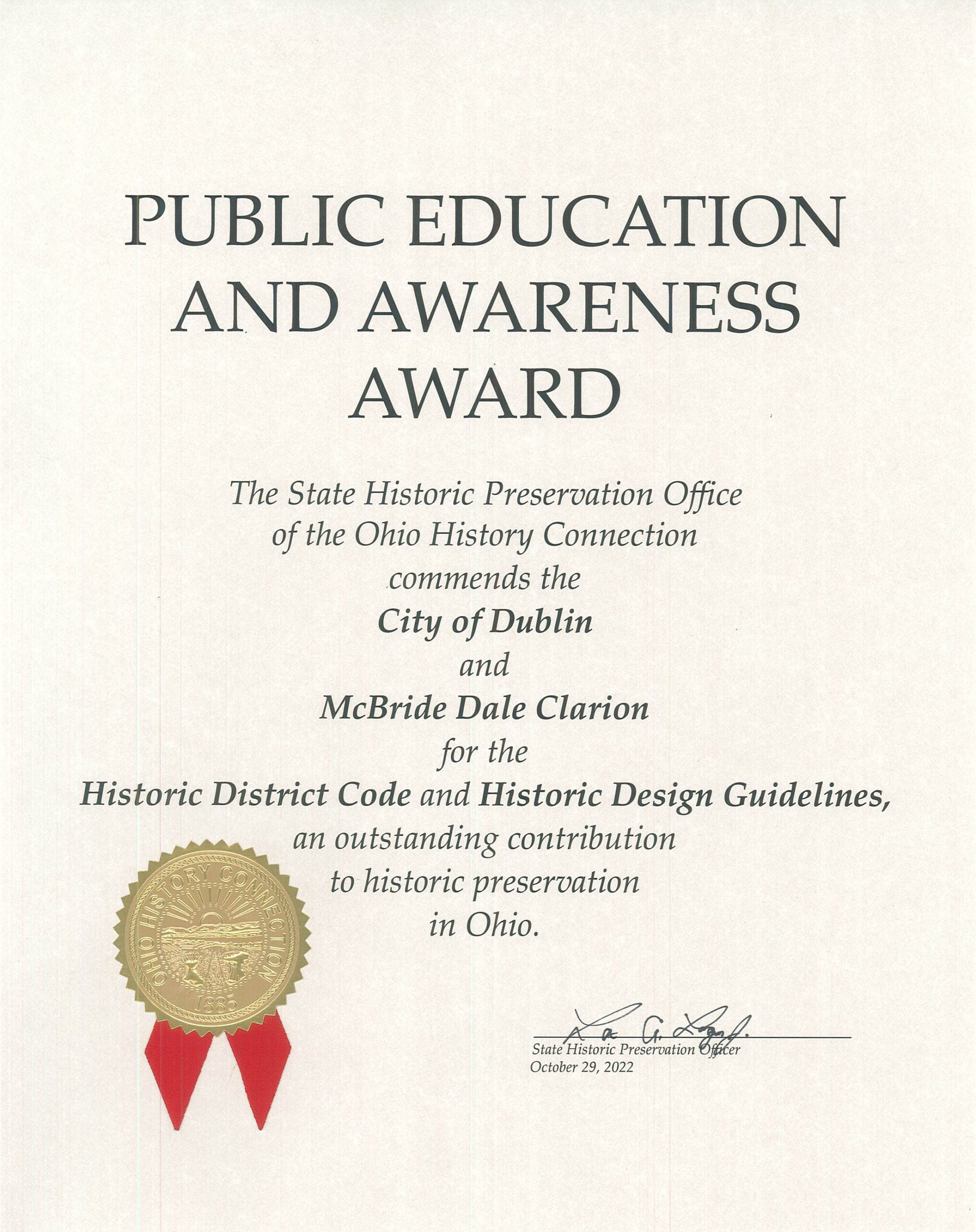Historic District Code &
Dublin Historic Design Guidelines
Public Education & Awareness Award
Settled in 1810, the City of Dublin is a thriving community that has undergone tremendous growth in the last five decades, increasing in population from 700 in 1970 to more than 50,000 by 2020. Despite this growth, the physical form of Historic Dublin is distinctive, clearly reflects the early history of the community and largely retains the character, scale, and feel of a traditional village.
The City of Dublin has long recognized the importance of a historic preservation-minded approach to community and economic development and has utilized a number of policy documents to designate historic places and oversee changes to them. Today we are recognizing the implementation of a major amendment to the Historic District Code and Design Guidelines that strengthen and clarify the community’s preservation goals.
Prior to this amendment, the Bridge Street District Code was also applied to properties in the Dublin Historic District, but over time, the city recognized that the code’s focus on urban, walkable design resulted in too much new construction that did not achieve the desired character, scale and overall compatibility with the Historic District. City Council determined to create provisions specific to the Historic District and worked for two years with City staff, a stakeholders group, its Architectural Review Board, and its Planning and Zoning Commission to develop new zoning code requirements and design guidelines. This process included a series of public meetings and design workshops to gain input from the community.
The newly adopted Code created four distinct zoning districts to address the specific development character desired for each unique area. The updated provisions recognize that the character and scale within each sub-district are unique and need to be addressed accordingly. They address alterations and additions to the historic buildings as well as building code, safety, street amenities and new construction.
The Historic Design Guidelines were also updated to support the Code by providing deeper guidance for applicant property owners, city staff and the Architectural Review Board. The guidelines accomplish this by addressing the context and character of the community, and includes sections that address cultural landscapes, neighborhood character, building types and architectural styles. These sections focus on the many details that help define the unique character of Dublin’s Historic District, including dry-laid stone walls, topography, natural elements, and cemeteries. Numerous sketches and photographs effectively illustrate these concepts. The largest portion of the Guidelines includes a users' guide and guidelines for rehabilitation, new construction, site design, and signs.
Aligning the Code and the Guidelines has provided all users of these documents and processes with new clarity and direction that will ensure that preservation of the district is the highest priority, and that it is balanced with the need for additions, alterations and new development.

